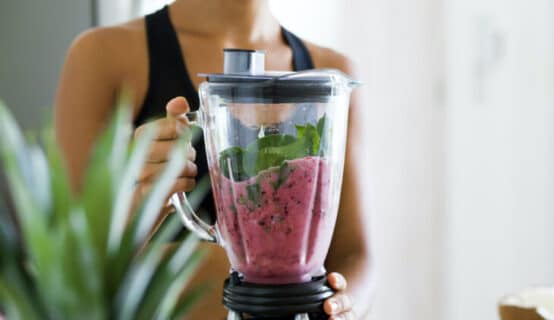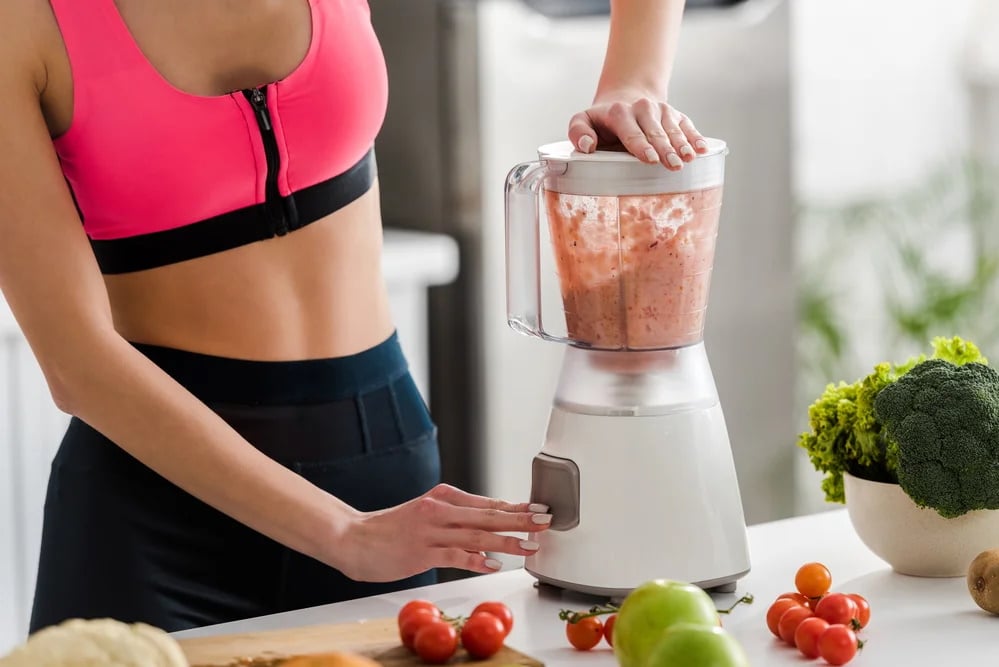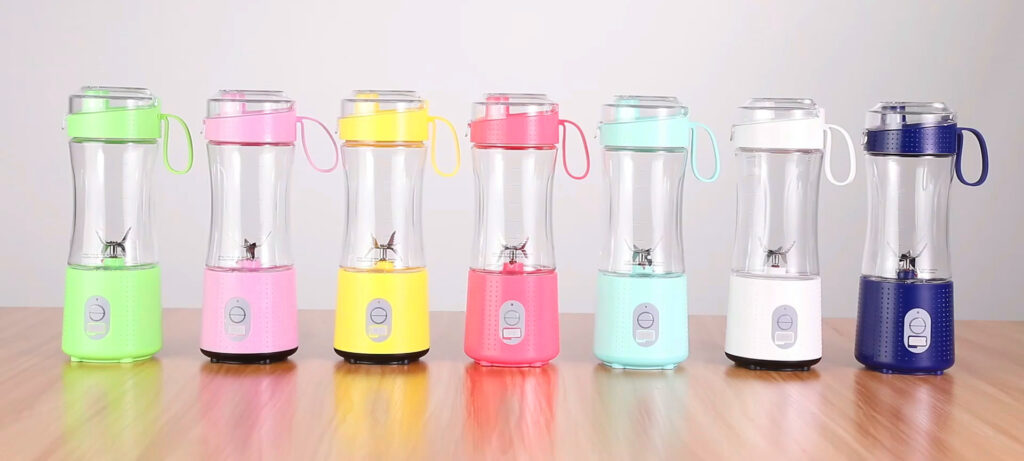So, you have the majority of the kitchen equipment but when you look around, you can’t see a blender. Well, you’d love to have one but they come in several types so you’re feeling overwhelmed finding the right type that will fit your needs.
The reality is, if you want a good blender, it’s important to know the main types and their functionality. Also, manufacturers keep on improving the models over time meaning and that gives you all reasons to stay updated.
To cut to the chase, personal blenders come in handy for creating yummy smoothies, or blending your favorite foodstuff at home. You can get either countertop or an immersion model. There are also manual and automatic models that cater to the needs of all kitchen enthusiasts.
The good news is, we will walk you through the main types of blenders, their features plus their good and bad sides.
Immersion blenders like Breville BSB510XL have a unique simple design for blending large chunks.
You can use them with a mason jar, wide-rimmed glass or any enclosed container. You’ll hold their stick-like design with your hand and press a button on their surface for blending
Like portable bottle blenders, immersion blenders are good for anyone who’s always on the go. You’ll find several models online with varying power so if you’re blending thick foodstuff, get a more powerful model and vice versa.
Immersion blenders have a simple design that makes them easy to clean. You’ll only have to clean the blade with warm water and wipe them clean and you’re done.
Some immersion blenders come with high power capabilities that makes them ideal for blending or mixing fluids like soup, and other hot liquids. Experts say their less-pressure build up features makes them ideal for handling hot liquids. You can also use these blenders to make smoothies and seed free drinks.
Another great reason to have an immersion blender is that they are easy to use with small quantities. While small amounts of food, such as baby food may stick and not blend properly in a regular size blender, you can easily create a smooth finish using an immersion blender.
Easy Clean: Most immersion blenders are dishwasher safe, but even if you choose one that isn’t, you can just blend a little hot water and dish soap and you can easily clean yours.
Less Steam Risk: Since you put an immersion blender straight into your pot, there is no steam pressure build up. So, there is a lower risk of splattering your kitchen walls with soup or suffering from burns.
You Need to Maintain Pressure: As the blade is exposed, pressure on the button needs to be maintained to operate the blender. This is a safety feature, but it can be difficult if you have little hand strength
May Not Create a Smooth Finish: While many immersion blenders can do a great job with baby food or soup, if you want to have a seed free smoothie or want to crush ice, you are not likely to be satisfied with the results.
Single serve/ bullet blenders are becoming more popular in the market due to their ability to make both single and double serve drinks
As you’ll notice, these blenders are compact yet powerful and come in several models from the Magic Bullet to Ninja Range. And one of the models that experts recommend is the Ninja Nutrio Pro blender that comes with 18 to 24 oz capacity. It offers enough power to break down your vegetables and juice for smooth drinks.
Experts also add that bullet blenders have a bullet shaped container you’ll fill with the ingredients you want to blend, screw a chopping blade then invert the machine to kick off.
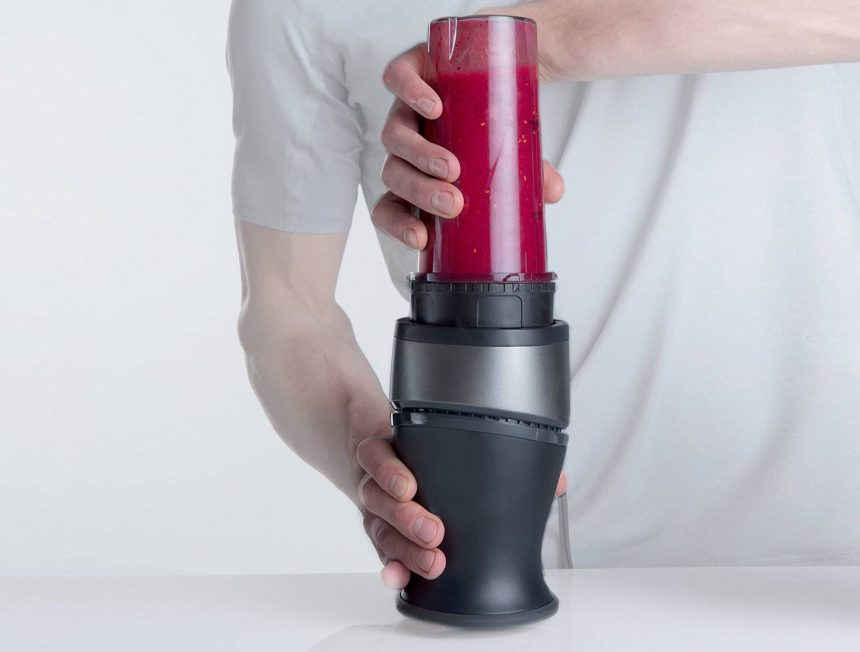
Due to their compact design, single serve blenders can blend a variety of food fast especially if you’re a traveling aficionado. Like we mentioned, they’re powerful enough to blend raw foods into smooth, rummy drinks. You can use your bullet blender to chop your nuts, ice, fruits, and lots of other liquid recipes. Experts also note that this blender suits making sauces and vinaigrettes, pureeing your baby food, making smoothies, and cutting small portions of herbs and vegetables. You can even make a quick pancake batter. They are only suited to very liquid recipes, but you can also puree baby food.
What makes this type of blender unique is how it works. You put the ingredients in the “bullet” shape container, then screw a chopping blade to the top and turn it upside down to insert it into the blender base.
Very Quick: The main advantage of a single serve blender is the speed. They can quickly turn chunky ingredients smooth in a matter of seconds.
Secure Blade: Another advantage is that the blade is securely contained in the bullet container, so you cannot access the blades during operation. This makes them okay for children to use.
Different Quality Standards: While there are some excellent single serve blenders on the market, there are some that may struggle to pulp raspberries or blend seeds.
Leaking Issues: Leaking can be a common problem, particularly if you don’t attach the blade unit firmly to the container. This can be a difficult balance, as you need to screw it on tightly to avoid leaks, but have it loose enough so you can remove the blade head.
If you didn’t know, bottle blenders like Cuisinart CPB-300 are slowly dominating the blending market. They feature a glass tube, and a base that comprises a motor and blades for slicing your food. Experts also add that blender bottles have a small ball whisk for you to mix your food content.
As their name suggests, portable blenders are lightweight and like bullet blenders, they’re good for travelers.
For better results, target an electric powered portable bottle blender during purchase. You’ll get instant results with the push of a button.
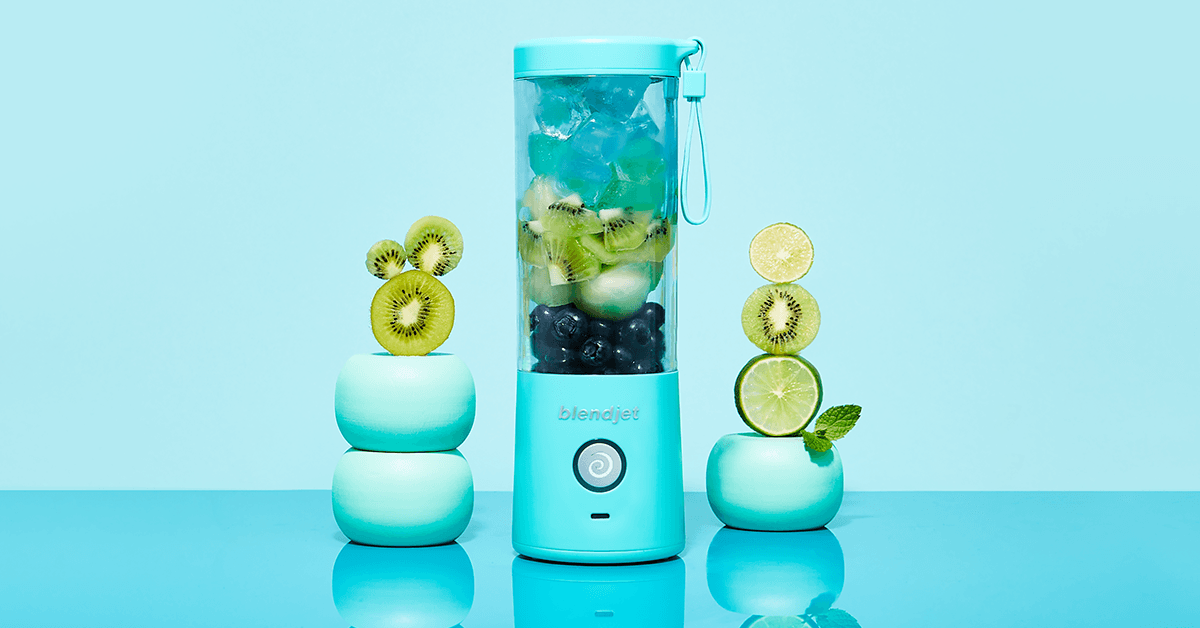
The best portable blender should come with a leak-proof seal, and a sturdy design for you to make and enjoy your drinks fast.
They suit Olympic athletes, professional sports teams, men’s fitness and many more seeking to make tasty drinks by whipping them while shaking. Experts say they work well when it comes to making yummy protein shakes and smoothies. You can also use them to mix your drinks at work
If you have a baby, get a portable blender to make baby food fast to keep your little one’s tummy full especially when travelling. They are easy to fit in your diaper bag and you don’t need to stress about finding suitable food when you’re out and about. If you’re eating at a restaurant, you can add some veggies from your plate together with a little water to create instant baby food for your little one.
Superb Portability: The blade and motor unit operates using a rechargeable battery. Most models can be recharged with a standard USB charger, so you can enjoy a truly portable experience.
You Can Move It Around: Since the travel blender is a self-contained, lightweight unit with no cables to worry about, you can move it while it is running to avoid bits being stuck on the sides.
Leaking: While travel blenders are relatively new to the market, there are complaints starting to emerge about leaking issues. Since you may not be using it where you can easily wipe down surfaces, you will need to ensure that both ends are sufficiently tightened.
Cleaning: Although it is convenient to blend on the go, this can create cleaning issues, particularly if you need to remix foods or drinks.
The countertop blenders are the most common type of blenders you’ll find in multiple homes. They have a large capacity and multiple options for making yummy drinks for your family or large groups of friends.
Like their name suggests, you’ll place your countertop blender on your kitchen counters. They usually come with a lid to cover and prevent the ingredients you’ll be blending from flying off.
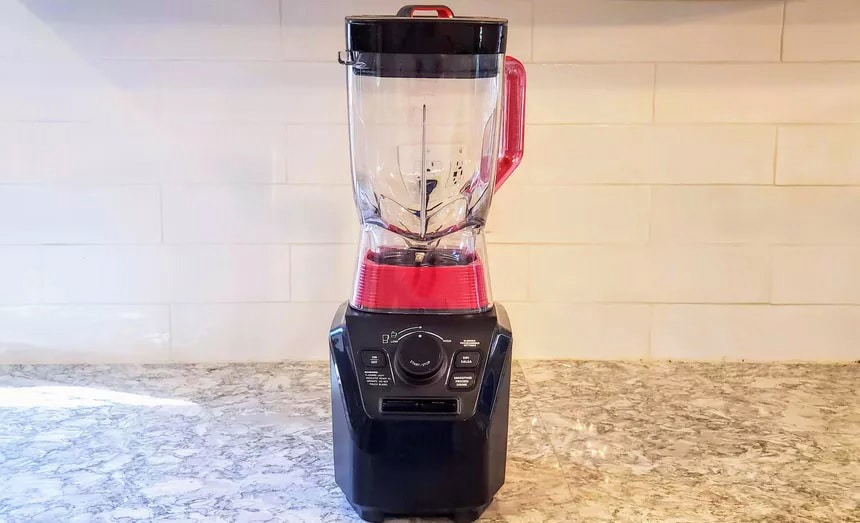
Most countertop blenders have a capacity of up to 2 liters which is ideal for blending large amounts of juice at home.
With a good model, you’ll get to cover it to avoid messing your countertops. For safety purposes, you can slightly press the lid while blending.
Unlike handheld blenders, countertop models have enough power to smoothly grind tough stuff like ice and other foodstuff. You’ll get a smooth blend in minutes and you can even prolong the blending time to get a smoother drink.
Overall, most countertop blenders are good for preparing smoothies, and crushing ice.
Versatile: Many countertop blenders have the ability to mix almost anything. There are usually multiple speeds with a pulse option to make blending easier and ensure that everything is well blended.
Fairly Easy to Clean: Although older countertop blenders were difficult to clean, newer models do not have this reputation. Many models are dishwasher safe, but others simply require adding some dish soap and water before you blend for a few seconds.
Bulky: Since countertop blenders are powerful and have a large capacity, they tend to be bulky. This is not much of an issue if you have plenty of countertop space and will use it frequently. However, if you will only use it infrequently, you may find the bulk annoying.
Easy to Accidentally Blend Items: Another potential downside of countertop blenders is that it is easy to accidentally blend a foreign object. With such a large capacity, you may not realize that you’ve left a spoon or other utensil inside before you hit blend. This can not only create an alarming noise, but can damage the blades and the glass jug.
Commercial blenders are great for professionals seeking a device with high power capabilities. They have a similar design with some countertop blenders though experts claim they’re a bit stronger to withstand daily use. According to most reviews, one of the best commercial blenders on the market is Blendtec 800 with its powerful 3.8 hp motor and a kitchen-friendly operation.
There are both compact and large models but the differences come in the power amounts. Most people use them in large restaurants and bars as they offer enough power to meet their demands.
Also, remember that commercial blenders may seem complex but become easy to use with time.
These blenders are popular due to their powerful motors that makes them awesome for commercial purposes. The blades are sharp to blend tough foodstuff.
Remember, most commercial blenders are heavy duty due to the material they’re made of. If you land a good commercial blender, it can last for long. However, their build makes it hard to move around.
Like the countertop blenders, these models have a large capacity to meet the blending needs of restaurants and bars.
You can use these blenders to grind chilies, make sauce and blend food and drinks. They also make a good pick for making smoothies.
Not Necessarily Only for Commercial Use: While they may be labeled “commercial”, many of these blenders are actually designed for high end home use. This does mean that if you do want it for a commercial kitchen, you will need to check the warranty carefully.
Can Cope With Almost Anything: With such great power, commercial blenders can cope with blending almost anything. From pulping soft cooked pumpkin to blending roasted nuts to create a delicious butter, you should enjoy great results every time.
Higher Price: Since a commercial blender typically has a far more powerful motor, this is generally attached to a far higher price tag.
Difficult to Clean: Although in theory, commercial blenders are self cleaning, with just a little water and dish soap, this is not necessarily the case. In reality, some ingredients can be very difficult to clean, particularly if you have sticky syrups or other problematic ingredients that may need to be scrubbed.
If you look closely at a stand/cake mixer like Cuisinart SM-50BC, it’s more like a hand mixer though bigger and more powerful. Experts say they lie between hand blenders and countertop blenders.
Hand and stand mixers are also known as cake mixers as this is the most common purpose for these machines. There are some very powerful mixers on the market such as Hamilton Beach, Cuisinart or Kenwood, but there are lower power options that can be a little cheaper and more portable.
These mixers have been around since the 1920s in a domestic setting, but large commercial models were in bakeries before this.
While most people use a mixer to create cake batter, you can use them as a blender. The spinning beaters can puree the ingredients and even add in air to create a fluffier product.
Like we mentioned, cake blenders come with several attachment and variable speeds. You can easily convert it from an ordinary mixer to a complex tool to make yummy meals in your kitchen. Some of the attachments it comes with include a standard dough hook for perfecting your heavy cookie dough and bread dough. The other tools you can use with this blender include food grinders, pasta cutting equipment and blenders to meet your whisking, cutting and blending needs. Overall, the cake mixer is majorly used in home and bakeries to make bread, cookies and soften tough dough.
Versatile: A hand or stand mixer is crucial for any serious home baker. They have the versatility to create a great cake batter or knead bread doughs. You can also use them to puree soft fruits instead of using a blender.
Variable Speeds: Most mixers have several speeds that can allow you to control the power of the appliance.
Can Be Bulky: While hand mixers are easy to accommodate in a drawer, stand mixers tend to be bulky and heavy. So, they can take up benchtop space and be difficult to pull out of a cabinet.
Not Easy to Clean: Although beaters and mixing bowls are typically dishwasher safe, the body of the mixer can be tricky to clean. You’ll need to use just a damp cloth to wipe down the mixer, which can be problematic if you have sticky substances on the machine.
You may think that blender combo systems suit professional cooks only but they’re great for beginners alike. They come with a combination of a mixer, food processor and blender in one machine. The good thing with blender combo systems is, they’re easy to use though you may take time to master how different components work if you’re a beginner. Experts recommend Ninja BN801 professional kitchen system with 5 preset Auto-iQ programs that allow you to create smoothies, frozen drinks, chopped mixtures and dough at the touch of a button
Overall, experts say that kitchen systems suit anyone seeking to save time, money and counter space in their kitchen.
Due to several options they come with, you can use blender combo systems to make several foodstuffs including dough, cocktails, fresh juice and even grind baby food. They have a strong motor to spin the blade and produce smooth blends.
Experts say blender combo systems are dishwasher safe so you’ll clean them in minutes. They also have a good-looking design like most blenders. And as expected, most blender combo systems are larger than ordinary blenders. The bigger the blender you buy, the better, especially if you’ll be blending foodstuff in large quantities.
Well, some of the features you’ll get with such a blender include an auto feature, multiple speed settings and preset options.
Superb Versatility: Kitchen systems can be used for a variety of food prep tasks including blending. Depending on the model you choose, you can blend, chop, puree, whisk, mix and juice foods.
May Include Additional Jars or Cups: Some systems also include additional pieces to make blending your favorite drinks and dishes even easier.
Takes Up a Lot of Space: With all the attachments and a base unit, a kitchen system can require a lot of countertop or cabinet space.
Learning Curve: You will also need to spend time becoming familiar in using the system, unlike a basic blender that can be used practically straight out of the box.
As you’ve seen, we have several types of blenders like hand held blenders, single serve blenders, travel blenders etc., and each one of them matches the needs of different users. They come with different capacities, attachment options, blades that affect their operation.
If you’re a beginner, it’s okay to start with a model with a few settings and upgrade with time. However, if your blending requirements are a little more complex, you will need to think about what functions and features you need. Don’t assume that more power or the highest price tag will provide the best option.
It’s now up to identify the type you need, and factor in your preferences and budget before investment. You’ll also have to consider the number of times you blend your food. If it’s multiple times a day, get a model that can withstand everyday use. It is well worth taking a little time to assess your needs and the various types of blender. This will help you to decide the right model for your home and you will be able to enjoy your new blender for many years to come.
